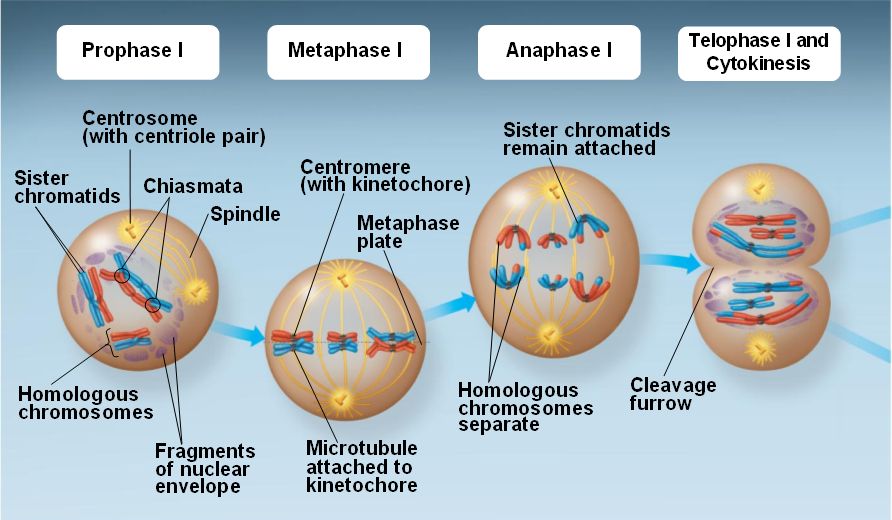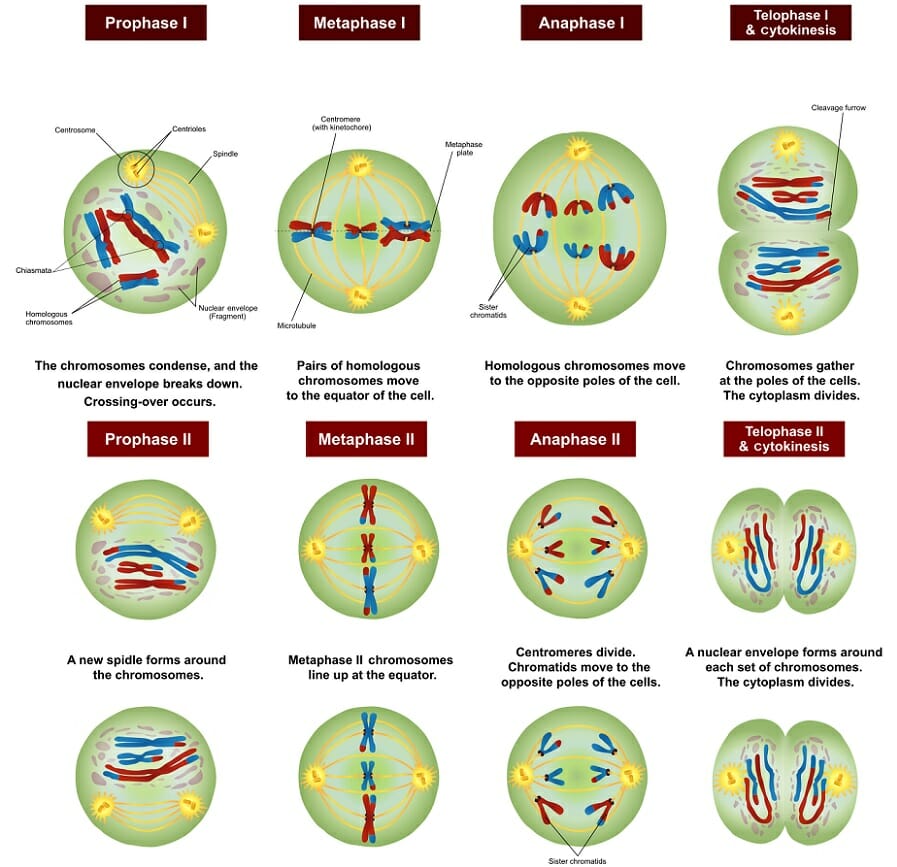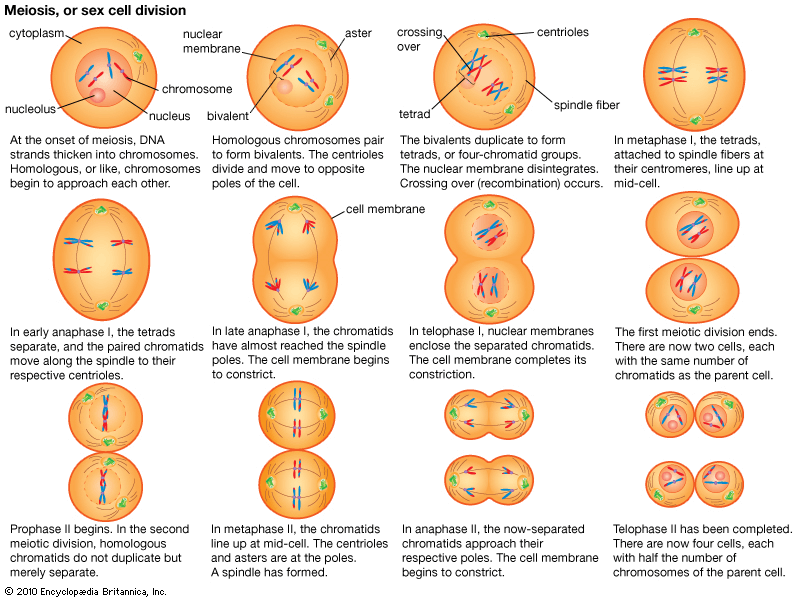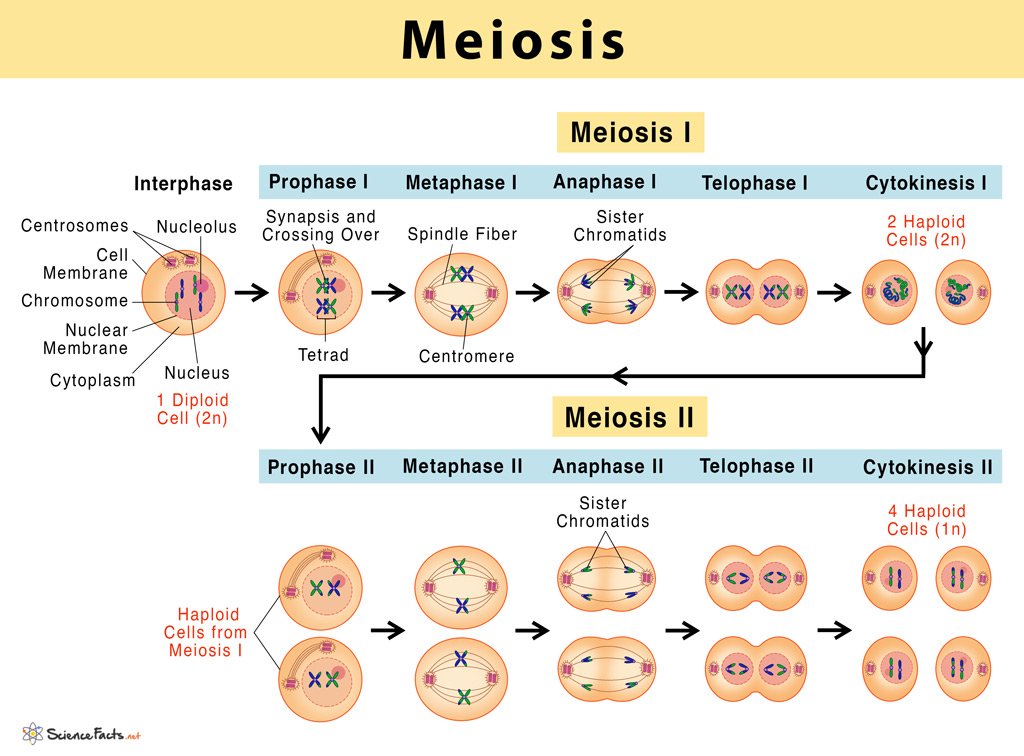How Many Cells Form At The End Of Meiosis 2
How Many Cells Form At The End Of Meiosis 2 - Web meiosis contains two separate cell divisions, meaning that one parent cell can produce four gametes (eggs in females, sperm in males). The g 1 phase (the “first gap. The period prior to the synthesis of dna. Web the end result is the production of four haploid cells (n chromosomes; Web cytokinesis separates the two cells into four unique haploid cells. In this phase, each gamete remains haploid in nature. Web if they talk about a normal human cell, we know that they have 46 chromosomes and 44 hotosomes, whereas the 2 sex chromosomes are known as a sex chromosomes. Meiosis is also known as reduction division. Web at the end of the meiotic process, four daughter cells are produced. At the end of meiosis 1 there will be two haploid cells.
At the end of meiosis 1 there will be two haploid cells. Web at the end of the meiotic process, four daughter cells are produced. Web at the end of meiosis 2 how many cells are there. Web cytokinesis separates the two cells into four unique haploid cells. Web the end result is the production of four haploid cells (n chromosomes; The g 1 phase (the “first gap. Web after meiosis ii, when each parent cell gets divided into two gametes each gamete cell contains 23 chromosomes. Meiosis ii starts with two haploid parent cells and ends with four haploid daughter cells, maintaining the number of. Meiosis is also known as reduction division. Web if they talk about a normal human cell, we know that they have 46 chromosomes and 44 hotosomes, whereas the 2 sex chromosomes are known as a sex chromosomes.
In this phase, each gamete remains haploid in nature. Each chromosome consists of two sister chromatids. Meiosis ii starts with two haploid parent cells and ends with four haploid daughter cells, maintaining the number of. The period prior to the synthesis of dna. In each round of division, cells go through. 23 in humans) from the two haploid cells (with n chromosomes, each consisting of two sister chromatids). The g 1 phase (the “first gap. At the end of meiosis 1 there will be two haploid cells. Each contain half the genetic information required for that orgamism. In meiosis, the cell divides twice but dna replication takes.
Meiosis Cell Division Ep 4 Zoë Huggett Tutorials
Web at the end of meiosis 2 how many cells are there. The period prior to the synthesis of dna. Web the end result is the production of four haploid cells (n chromosomes; It occurs in two phases meiosis1 and meiosis 2. Each chromosome consists of two sister chromatids.
Cell division and reproduction It's a natural universe
Web meiosis contains two separate cell divisions, meaning that one parent cell can produce four gametes (eggs in females, sperm in males). Web if they talk about a normal human cell, we know that they have 46 chromosomes and 44 hotosomes, whereas the 2 sex chromosomes are known as a sex chromosomes. Web the end result is the production of.
meiosis_I.html 13_08aAnimalMeiosisOne.jpg
Web cytokinesis separates the two cells into four unique haploid cells. Web answer (1 of 14): Each contain half the genetic information required for that orgamism. 23 in humans) from the two haploid cells (with n chromosomes, each consisting of two sister chromatids). Meiosis is also known as reduction division.
Meiosis Definition, Stages, Function and Purpose Biology Dictionary
The period prior to the synthesis of dna. At the end of meiosis 1 there will be two haploid cells. Web the end result is the production of four haploid cells (n chromosomes; Web 00:51 meiosis is a type of cell division in sexually reproducing organisms that reduces the number of chromosomes in gametes (the sex cells, or egg and.
Biology 11 Topic 13 Cell cycle, DNA replication, mitosis and meiosis
The period prior to the synthesis of dna. Web at the end of meiosis 2 how many cells are there. Meiosis is preceded by an interphase consisting of g 1, s, and g 2 phases, which are nearly identical to the phases preceding mitosis. At this point, the newly formed nuclei are both haploid. Web 00:51 meiosis is a type.
Haploid Cell Meiosis Images Galleries With A Bite!
Four diploid cells are formed by the end of meiosis stage two. Web in the meiosis, dna replication is followed by two cell division rounds to produce four daughters cells, each with half of the number of chromosomes as an original parent cell. Meiosis ii starts with two haploid parent cells and ends with four haploid daughter cells, maintaining the.
👍 Two divisions of meiosis. Learn About the Stages of Meiosis. 20190131
Web 00:51 meiosis is a type of cell division in sexually reproducing organisms that reduces the number of chromosomes in gametes (the sex cells, or egg and sperm). The period prior to the synthesis of dna. Web the end result is the production of four haploid cells (n chromosomes; In this phase, the cell increases in. Web after meiosis ii,.
hillis2e_ch07
The period prior to the synthesis of dna. Web 00:51 meiosis is a type of cell division in sexually reproducing organisms that reduces the number of chromosomes in gametes (the sex cells, or egg and sperm). The g 1 phase (the “first gap. Web meiosis contains two separate cell divisions, meaning that one parent cell can produce four gametes (eggs.
Meiosis Cell Division Assignment Help By Online Tutoring Sessions
Web cytokinesis separates the two cells into four unique haploid cells. Web after meiosis ii, when each parent cell gets divided into two gametes each gamete cell contains 23 chromosomes. The g 1 phase (the “first gap. Four diploid cells are formed by the end of meiosis stage two. It occurs in two phases meiosis1 and meiosis 2.
Meiosis Definition, Stages, & Purpose with Diagram
Web if they talk about a normal human cell, we know that they have 46 chromosomes and 44 hotosomes, whereas the 2 sex chromosomes are known as a sex chromosomes. Web cytokinesis separates the two cells into four unique haploid cells. Web at the end of the meiotic process, four daughter cells are produced. The period prior to the synthesis.
Web Answer (1 Of 14):
Web after meiosis ii, when each parent cell gets divided into two gametes each gamete cell contains 23 chromosomes. Web the end result is the production of four haploid cells (n chromosomes; In each round of division, cells go through. Web cytokinesis separates the two cells into four unique haploid cells.
Each Chromosome Consists Of Two Sister Chromatids.
In meiosis, the cell divides twice but dna replication takes. At the end of meiosis 1 there will be two haploid cells. Web at the end of the meiotic process, four daughter cells are produced. In this phase, the cell increases in.
Meiosis Is Also Known As Reduction Division.
At this point, the newly formed nuclei are both haploid. It occurs in two phases meiosis1 and meiosis 2. In this phase, each gamete remains haploid in nature. Four diploid cells are formed by the end of meiosis stage two.
Web Meiosis Contains Two Separate Cell Divisions, Meaning That One Parent Cell Can Produce Four Gametes (Eggs In Females, Sperm In Males).
Web in the meiosis, dna replication is followed by two cell division rounds to produce four daughters cells, each with half of the number of chromosomes as an original parent cell. Meiosis is preceded by an interphase consisting of g 1, s, and g 2 phases, which are nearly identical to the phases preceding mitosis. Meiosis ii starts with two haploid parent cells and ends with four haploid daughter cells, maintaining the number of. 23 in humans) from the two haploid cells (with n chromosomes, each consisting of two sister chromatids).









